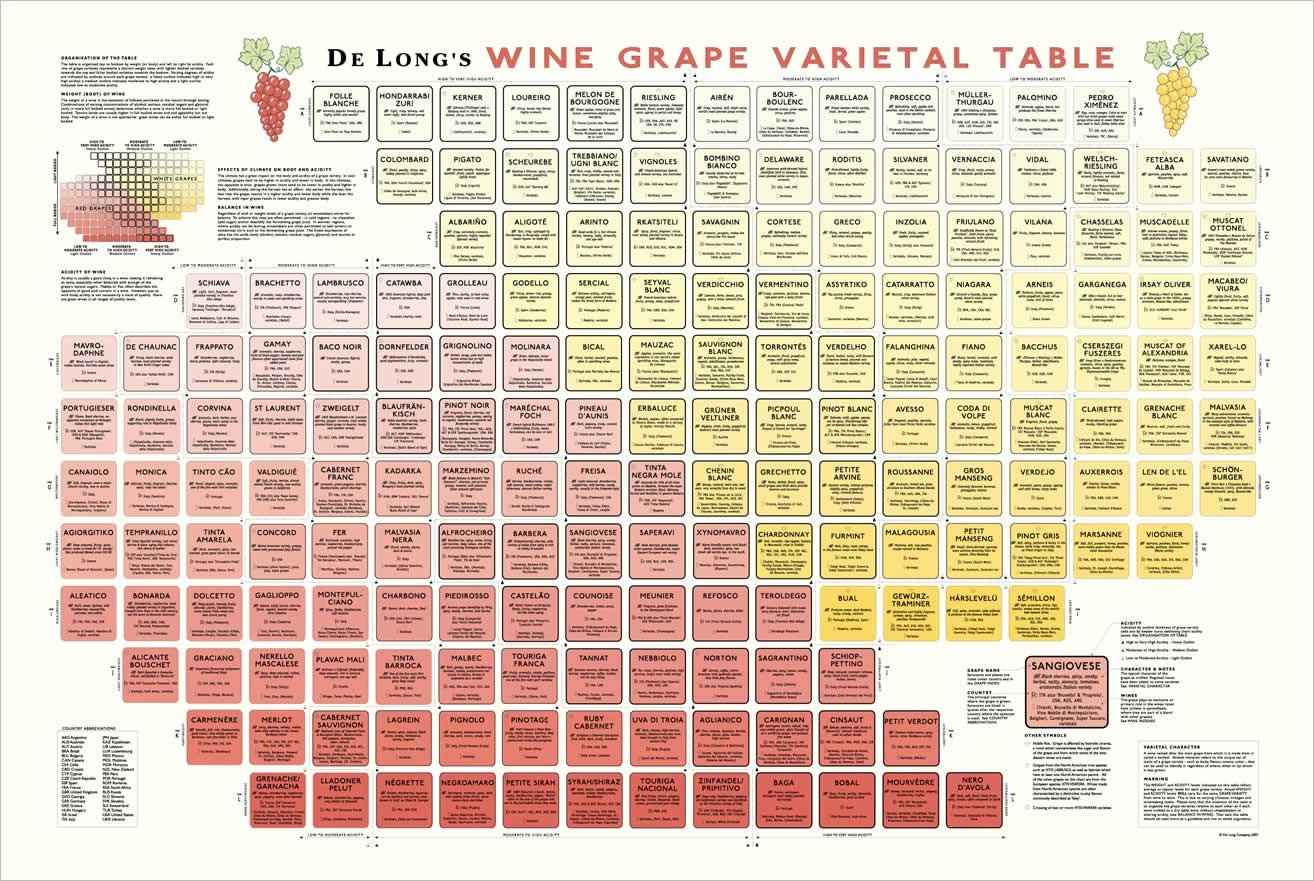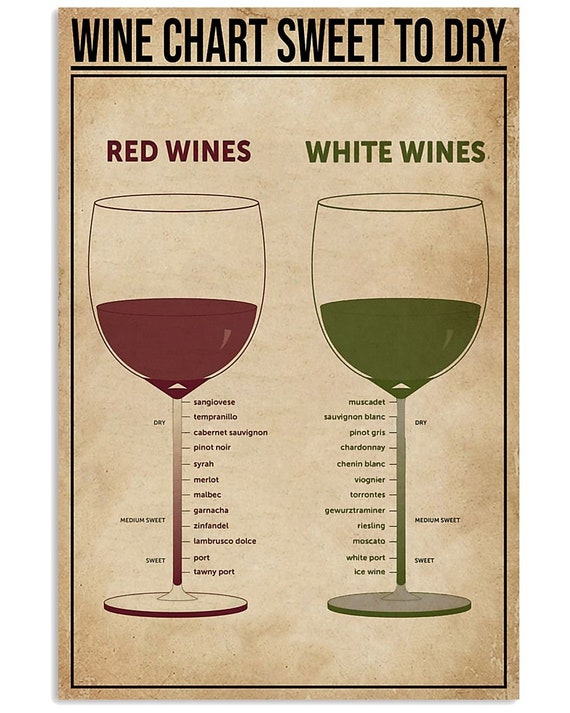
Sauvignon and Chardonnay is preferentially paired with shellfish. Its medium body and soft tannins won't overpower the dish, allowing the beef and other ingredients to shine. The wine's flavors can complement the savory and juicy flavors of the meat, enhancing the overall experience. Merlot's smooth and fruity characteristics make it a great companion for roast beef. When it comes to beef, Merlot can complement various cuts and preparations.
Types of wine chart full#
It is known for its medium to full body, soft tannins, and fruity flavors. Merlot is another popular red wine variety that pairs well with beef. Caymus Vineyards Cabernet Sauvignon is a 750mL bottle that offers layered, lush aromas and flavors, including cocoa, cassis and ripe dark berries. You can get Cabernet in the comfort of your home with Amazon.
Types of wine chart free#
When pairing Cabernet Sauvignon with beef dishes, consider the level of seasoning, sauces, and cooking methods used in the preparation.Īdditionally, personal preferences play a role, so feel free to experiment and discover your favorite combinations.įrom the chart is obvious that beef pairs well with red wines. Overall, the wine's boldness can stand up to the intensity of the meat, providing a satisfying combination. The wine's tannins can cut through the richness of the meat, balancing the overall taste. The wine's tannins and bold flavors provide a nice contrast to the meat's richness. The rich and complex flavors of Cabernet Sauvignon complement the savory taste of beef dishes, enhancing the overall dining experience. It pairs well with a variety of foods, including beef. If you want to learn about other pairings, go to cheese and wine pairings! 16 Best Wine and Meats PairingsĪccording to our review, these are the best wine and meats pairings and counts:Ĭabernet Sauvignon is a red wine known for its full-bodied and robust characteristics. The book describes and integrates the flavors of wine and reveal which of its components are the most food-friendly. If you cannot stop thinking about wine paired with meat, I suggest you get from Amazon Lobel's Meat and Wine: Great Recipes for Cooking and Pairing. This list is definitely biased towards wines common in English speaking countries. There are many different kinds of wines that go well with meats but were not mentioned in these lists. Most common or referenced wines, and meats are included. The summary was focused on specific names. Also sites that give you hints or guides to pair wines and foods according to taste. Wine and Meat Pairingsįor the pairings, dishes or prepared food pairing sites were avoided. This hardcover is and expanded guide about wines, grapes, and countries of origin. To learn more about wine, Amazon has Wine Folly: Magnum Edition: The Master Guide. The wines were represented and classified as follows: Yes, the color is a good guide, but here is much more than color when it comes to choosing a wine. Shellfish: Oyster, Scallops, Shrimp, Lobster, Prawns, and CrabĬhoosing what wine goes with your food is easier once you know what kind of wines are out there, and how they came to be.Strong Flavored Fish: Herring, Mackerel, Sardines, and Anchovies.Meaty Fish: Salmon, Tuna, Bluefish, Swordfish.Medium Textured fish: Flounder, Seabass,Tilapia, and Sole.Mild Flavor: Halibut, Trout, Red Snapper, Grouper, Cod.Lean and Flaky Fish: plaice, sole, perch.Other Meats: Sausage, Lamb, Venison, Game.For the wine and meats pairings, the meats where grouped as follows:

However, they would have been lost as an important category of still wines - and so, too, would the appreciation of just how varied pink wines are.Meats were classified by flavor not by phylogenetic relations between animal species. Within the Periodic Table, rosés could have been distributed in and among the white and red table wines based on weight (light to full-bodied) and flavor characteristics. The hue, style, weight and texture of still rosés differ depending on the grape variety, as well as details of the infusion method used.

Like red wines, rosés are made using red grapes, with the pink color usually the result of letting the grape juice and skins stay in contact for only a short time - a little like the way colors from a tea bag infuse into the water. Red winemaking includes a period of time where the skins and clear juice mingle to add color, resulting in purple, ruby-red or merely pale-garnet wines. White wines are, in general, made by fermenting grape juice only.

Typically the fleshy pulp inside the grape contains clear juice, and this juice is turned into wine, fermented by yeasts that eat the fruit's natural sugars, then convert them to alcohol.
Types of wine chart skin#
However, rosé wines are not normally made from a mixture of red and wine wines instead, their pink color comes from the skin of the red grapes. Rosés have found a home in the center of the table, being neither red nor white but a combination of the two colors.


 0 kommentar(er)
0 kommentar(er)
